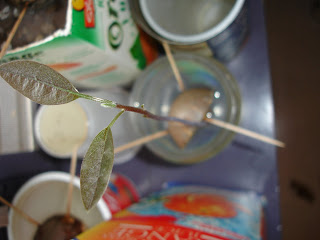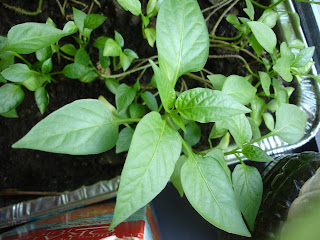






The flooding/drying routine seems to have worked. All the plants seem to be doing just as well as when I left them. I still counted 15 strawberries when I arrived, so none seem to have died. The qualifying language is because I accidentally killed a few when I watered them. They are so delicate that even the slight motion of water entering the bowl rips them into two. Also, I added some potting soil to make the ground level, which buried some of the plants that were lying flat.
I mentioned in a past entry that plants can handle temporary dehydration pretty well. In fact, the estimate I gave that it takes 6 hours for them to prop back into shape was way over. I've included pictures of my weed bowl (not the ganja) that were struggling with a dearth of water. The first one is when I arrived. The second picture is 35 minutes after I watered them. The third picture is 5 hours after I watered them. The difference between the first two is so drastic that the movement is practically visible to the unaided eye.
I was also very pleased to see that the apple seeds sprouted. The roots came from the pointy side of the seeds, which challenges my assumption that the first apple seed that "sprouted" had a root coming out of the side. I probably was not looking at a root (but rather a chunk of paper towel or something), but now that it's in the soil there's a reasonable chance that it is sprouting too. I hope to soon take out the rest of the apple seeds from the refrigerator. Note: The picture is one of the apple seeds that just sprouted. I covered it in an inch of soil after taking the picture.
The other pits that I took out of the refrigerator about 10 days ago are still sitting in water, unchanged. I expect they will take much longer to show any progress, since they are drupes. Basically the hard outer shell is preventing much water from coming in, and also preventing me from seeing any progress that's going on inside. As with the apple seeds, I plan on being very patient with them. One thing that the strawberries taught me is that the seeds sprout when you least expect them.





























